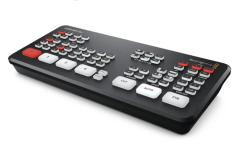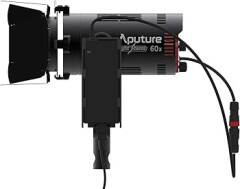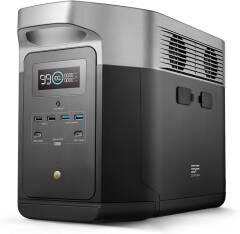Categories
Jibs And Track’s Indispensable Role In The Modern Film Industry
In the realm of cinematic artistry, the marriage between technology and creativity is constantly evolving to elevate storytelling. Among the many tools at the disposal of directors and DOPs, tracks and jibs stand out as indispensable instruments. The not only infuse depth and dynamism into your shots but also add visual flair to the final product. These unassuming pieces of equipment play a pivotal role in shaping the visual narrative and have become essential for the modern film industry.
Dollies
Dolly and Tracks really are the unsung heroes behind the seamless and fluid camera movements that captivate audiences. They provide a controlled pathway for the camera to glide effortlessly through scenes, adding a layer of sophistication and elegance that you cannot replicate with static shots alone. Tracks allow film makers to execute intricate movements like tracking shots, push-ins, and pull-outs, enabling them to follow characters or objects, or establish mood, convey emotions and emphasize crucial moments by shifting the focus of attention. Whether the camera glides gracefully alongside a character in a contemplative moment or rushes forward in a high-stakes chase, tracks breathe life into the film’s visual language, amplifying the narrative’s impact. In the event-world tracks have long provided a more interested shot across a stage or back or audience. For corporate films and commercials they have allowed film makers to create interesting shots to maintain viewers interest.
The core ones
Dollies come in a range of sizes, and depending on the situation and setup bigger isn’t always better.. Yes, not much can rival the Chapman PeeWee Dolly… there’s a reason it’s been the go-to for many DOPs for many years, but sometimes you are looking for something a bit smaller and compact to work in smaller areas… sometimes you may be looking for a simple move where the hydraulic bazooka is just overkill… and sometimes you just need to keep your production manager happier with the budget spend.
For those reasons we’ve found many productions moving towards smaller sit-on dollies such as the Egripment Matador, Egripment Focus Dolly or Keywest Magic Dolly. All 3 of these can run on the standard track (either Scissor Track or the bigger Moy track). Further, the Matador and Magic Dolly can also run on their pneumatic wheels. This lets you get reasonably smooth movements without needing to lay any track out at all. If you are operating in a smaller space then the Libec TR-30 gives a small, compact and lightweight dolly system. Smooth for medium format cameras and DSLRs and folding down for easy transportation. It is not a sit-on dolly, meaning the camera runs along the track in the same way a tripod would, but gives that same bit of horizontal movement and allows the cameraman to have full control over the camera movement as he walks with it.
The niche ones
We also have more unusual dolly systems such as the Raptor Rickshaw. The Rickshaw allows the camera operator to sit and film whilst being pulled by another crew member. This is particularly popular for faster moving tracking shots where it’s too much to ask the camera operator to pace the tracking speed whilst also concentrating on camera operation.
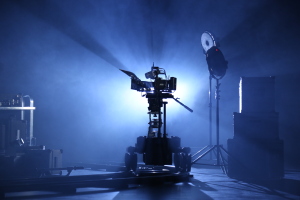
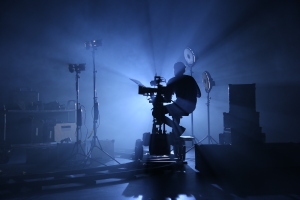
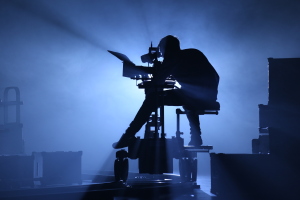
Jibs
Jibs also possess the ability to transform the way you capture your scenes by extending the camera’s range of motion vertically. Mini Jibs give that slight extra movement which just gives a little something extra to scenes, even though the range of movement is not as extreme as full sized ‘jimmy jibs’ which are being increasingly phased out in favour of drones. Our Mini jibs include the Libec JB-30, Libec Swift 50 and Prosup E-Jib.
The Keywest Pallada Jib provides the best of both worlds, with integration into nearly all dolly systems using the standard Euroboss connection, meaning it will work with all the sit-on dollies mentioned above, and more.
Sliders are another amazing tool for achieving these sorts of effects, taking up less space and being easier to transport but only allowing shorter movements. Much like Dollies they come in a variety of sizes depending on the camera setup and desired effect. From the Ronford Baker 4ft Slider for Moy Heads (and having a maximum payload that can easily handle a full cinema camera setup such as the Mini LF) to the Prosup Tango for smaller cinema setups and TV cameras, to lightweight 1m sliders for DSLRs such as the iFootage Shark.
The Edelkrone JibONE brings motion control to the table. Whilst limited to smaller cameras, the JibONE excels in it’s ability to deliver fluid and seamless camera movements. Whether it’s sweeping shots that capture the grandeur of landscapes, delicate tracking shots that immerse audiences, the jib’s precision-controlled motion guarantees smooth transitions and reliable movements, or push-ins and pull-outs to reveal more of the scene or product, it allows movements which can be done over and over again with incredible accuracy. It’s modular design enables quick assembly and disassembly, and it’s lightweight construction makes it easily transportable.
Conclusion
As technology continues to evolve, tracks and jibs will undoubtedly remain integral to the film maker’s arsenal, adding dynamism emotion, and immersion to scenes. Together, tracks and jibs elevate storytelling by guiding the audience’s gaze, establishing context, and adding depth to scenes, ultimately enriching the overall film narrative. No technological advancement can replace the feeling this movement gives the viewers.
